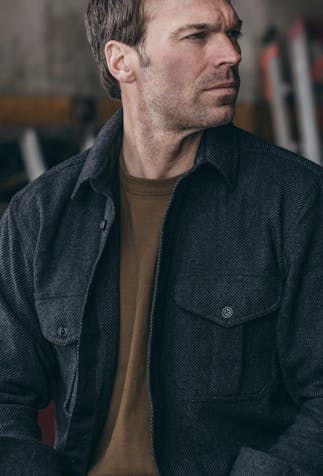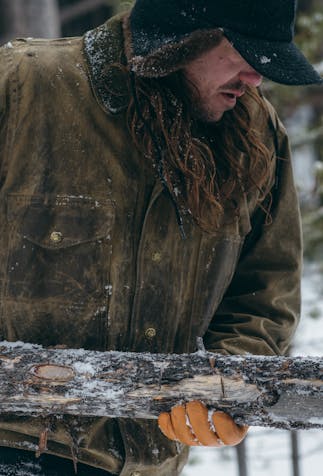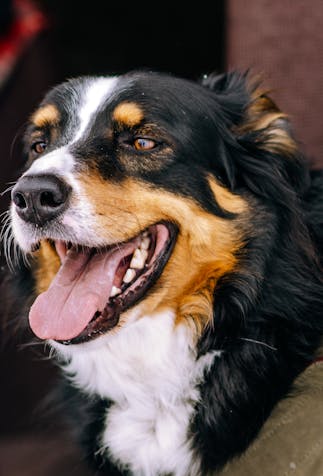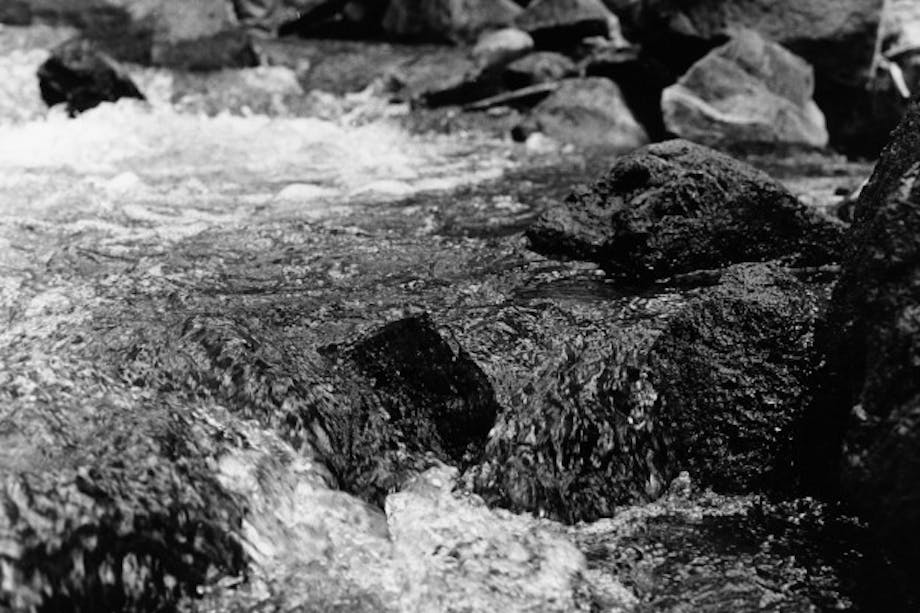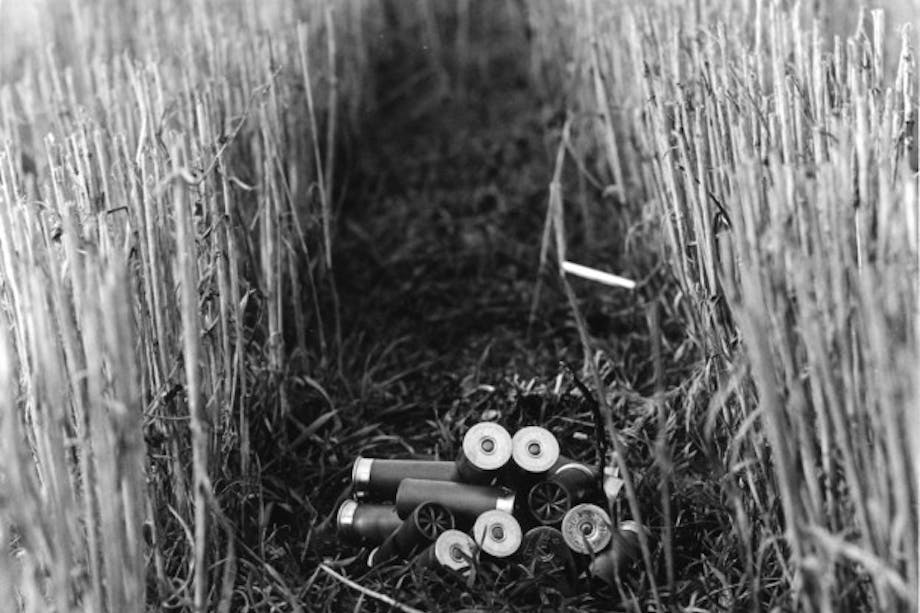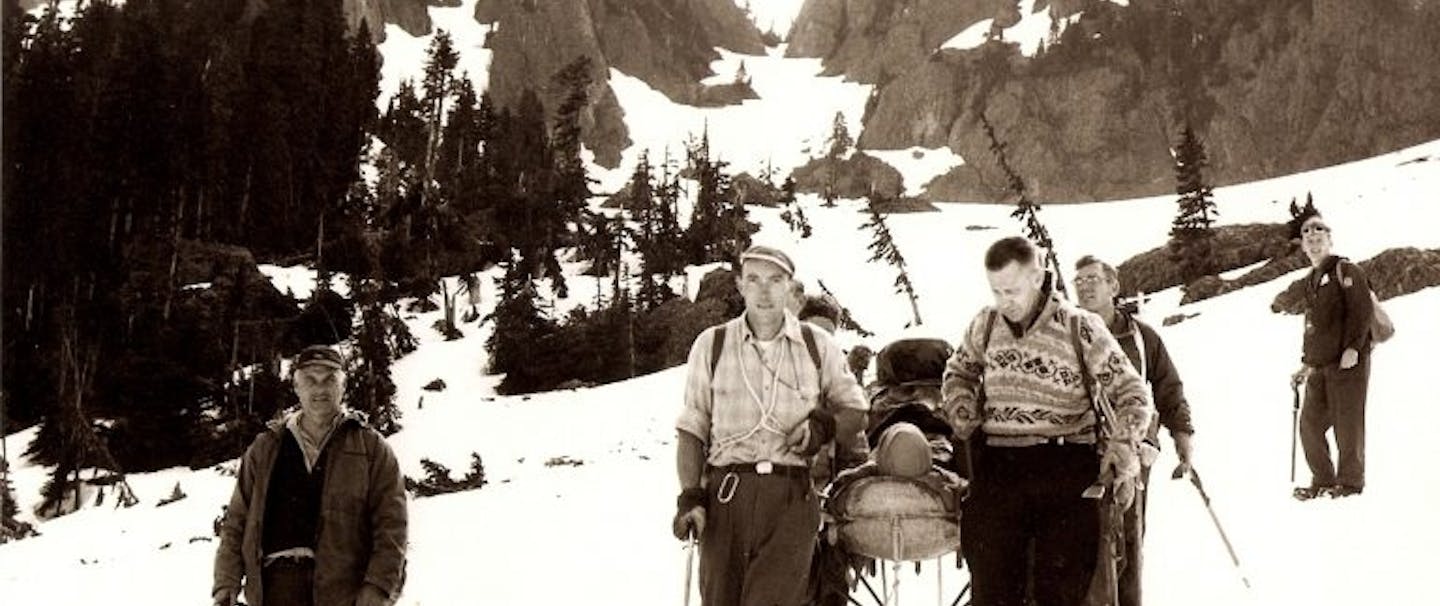The Wind River Range rises from the river itself, fall shifting into winter as my truck reaches the outskirts of the town of Dubois. I slow at the town museum, looking at the life-sized bronze cowboy sculpture, one of many of John Finley’s fixtures in town. I stop for a coffee at the Perch, a local coffee house, and make my way out of Dubois. A driveway marked by an old barrel indicates I’ve made it to the Finley ranch.
For over 100 years, John Finley’s family has homesteaded on this land, ranching and guiding big game hunts and dabbling as artists. Today, John may be equally well known as Wyoming’s Cowboy artist, creating sculpture, children’s books, watercolor paintings, acrylic paintings on wasp nest paper, custom jewelry, and scrimshaw. John and his wife, Monie, invited me to join them on their ranch for an afternoon & chili dinner. We chatted about the ranches’ history, John’s upbringing and schooling on the original homestead, and the incredible art he creates.

I’m curious about the story behind your connection to this land. What do you know about the original settlement and your family roots here?
“My grandfather Duncan and three brothers came into this area with sheep in 1901. They settled nearby and at that time this land was within control of the reservation; it wasn’t opened until 1906. That year, Grandpa Finley came over then settled and deeded the land. They switched to cattle and sheep fairly quickly. One of the other brothers, grand Uncle Tom to me, one of his boys said that grandpa Duncan liked the sheep because of double income but he liked cattle best. My mom married my father, who was from Scottsbluff, Nebraska in 1936. They expanded the ranch and then later years, sometime in the mid-1970s, he sold a part of the land to Double Diamond Ranch down the road, which gave me a chance to develop my art. Now, Monie & I maintain what we still have of the ranch and do a little hay & cattle. I fill my remaining time with art.”
What was it like growing up here?
“I grew up in the house down below, the old homestead. We had all kinds of fun, the biggest playground you can have. That little building you can see there with the green roof, I went to school there for the first few years. We had a few teachers who came out and taught us, and there’s another schoolhouse nearby where my mom went to school. There used to be barely anything left, then it was taken apart and the logs were used by a nearby ranch. It’s hard to fully know, because I don’t have anything to compare this life to, but it was just the way of our world in those days.”

One of 5 children, why did you decide to stay on this land?
“My oldest brother worked in logging, as did my middle brother, who was killed in a logging accident years ago. My oldest brother lives up in Coeur d’Alene, Idaho, retired up there. I’ve got two sisters. I grew up in this country and took it for granted, then I went into the military and realized there aren’t a lot of places like this one. So, I came back and helped dad here until he sold that bigger portion of the ranch and did some day riding for other ranches. I’ve stayed here and worked on my art and maintained what we still have since. This place and I seem so mixed up together it’s hard to separate the two.”

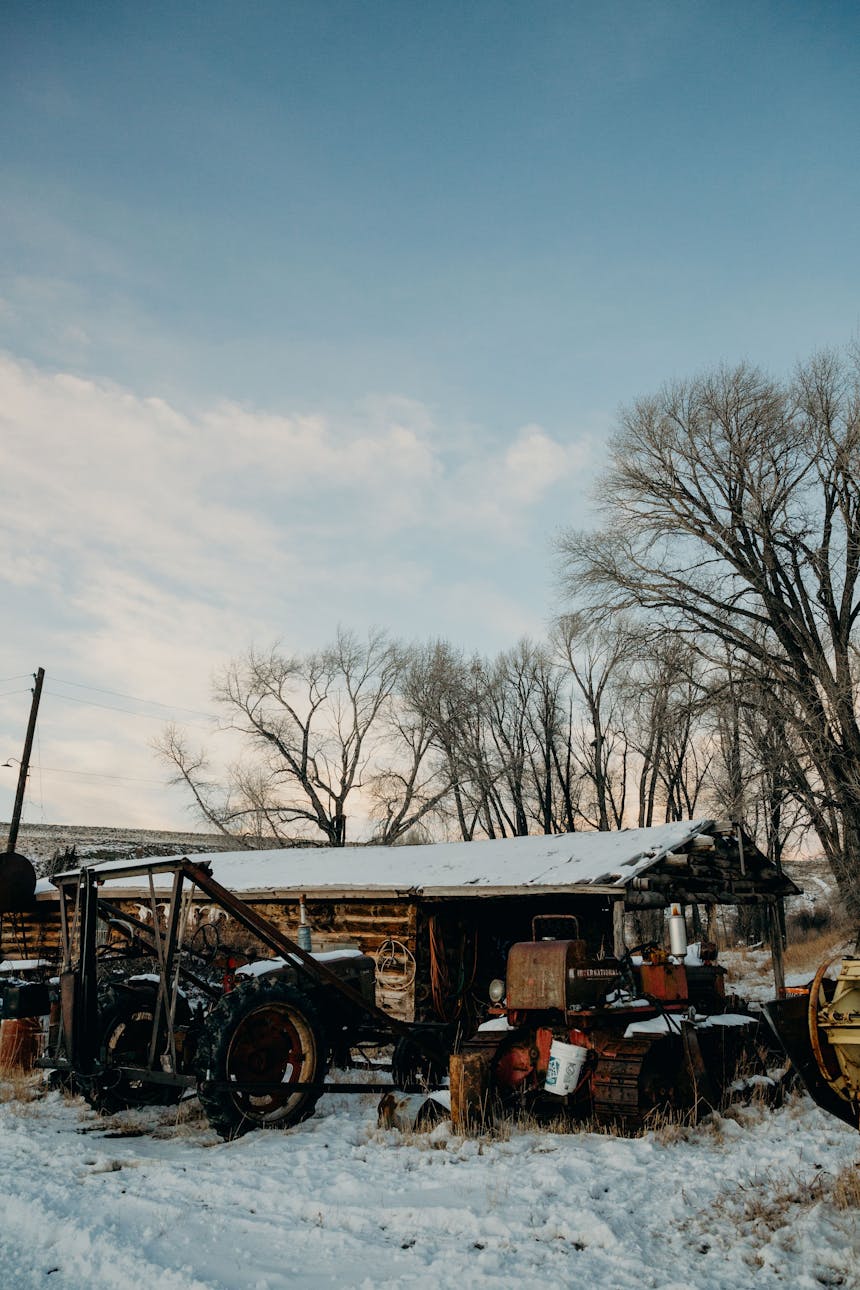
In your eyes, how has the land and the community changed?
“A lot of it has been gradual. You see little things pop up. I’ve been collecting my grandfather and father’s photographs, a history of sort how this crick has changed. There’re actually less people here now then there was. I used to watch my dad turn our bathroom into a dark room to work on those photographs. Back in the 40’s and 50’s other ranchers owned these ranches around us, and over time they’ve changed hands and shifted directions. We’re the only folks around here who have maintained our ranch in the same family over the years. We got that centennial ranch award for Wyoming some twenty years ago or so. Dubois is definitely still years behind many areas, so maybe it’s not as drastic, but certainly happening.”
You’re an incredibly talented artist with multiple mediums. How did you learn and what drew you to pursuing a life as an artist?
“When I went to school in this little one room on the ranch, it was an eight-grade school though we didn’t have enough students for every grade. There was another kid there, Freddy, and about all I remember is we’d get set out on the porch and we had clay and pencils and we drew with that. It probably started there. My grandma Finley used to paint china and my dad too, though he didn’t do much. When dad sold the ranch, it gave me the time to do more of it. I was mostly self-taught until the Susan Kathleen Black workshop got started here. I got involved in that and that’s one of the best art workshops in the US. I’ve been taking on these projects ever since.”
Many of us are inspired by the landscapes we love, I’m guessing this land runs deep in your soul. How do you feel it impacts your art?
“You know, it probably has a lot more than I even realize. There’s a lot of artists that have moved to his area, and I often wonder if the landscape made me an artist. They moved here because they love the place, but I think this place shaped the artist I am. Looking at this country and trying to see it the way those from away see it, it’s hard for me to imagine what they see and feel. Being away in the service gave me a taste.
My paintings, I’ve painted in all 3 major styles though I’ve settled with water color, I can’t say how much that did, the blend in color. The scrimshaw, I used to guide big game hunters, and I hunted my whole life, and the first thing I do when I come on a kill is look for ivory- I carried this one piece for years and it got smooth and I wondered one day if I could scrimshaw it. I took my knife out and put an elk on it and that’s how I got started. Scrimshaw is an old trade. I do quite a bit with antlers, I’d say the land here influences that because it’s so available. I also silversmith, making jewelry and that. I used to do a lot of leather tooling and rawhide work, but less of that now. I just love to create.”
How would you describe your work? What mark or legacy do you hope to leave?
“My artwork, it’s diverse. The well-known artists usually have one medium or say two, but I get bored with the same thing. (Laughs.) I just hope to preserve an image of the lifestyle that I have enjoyed here in Wyoming.”


